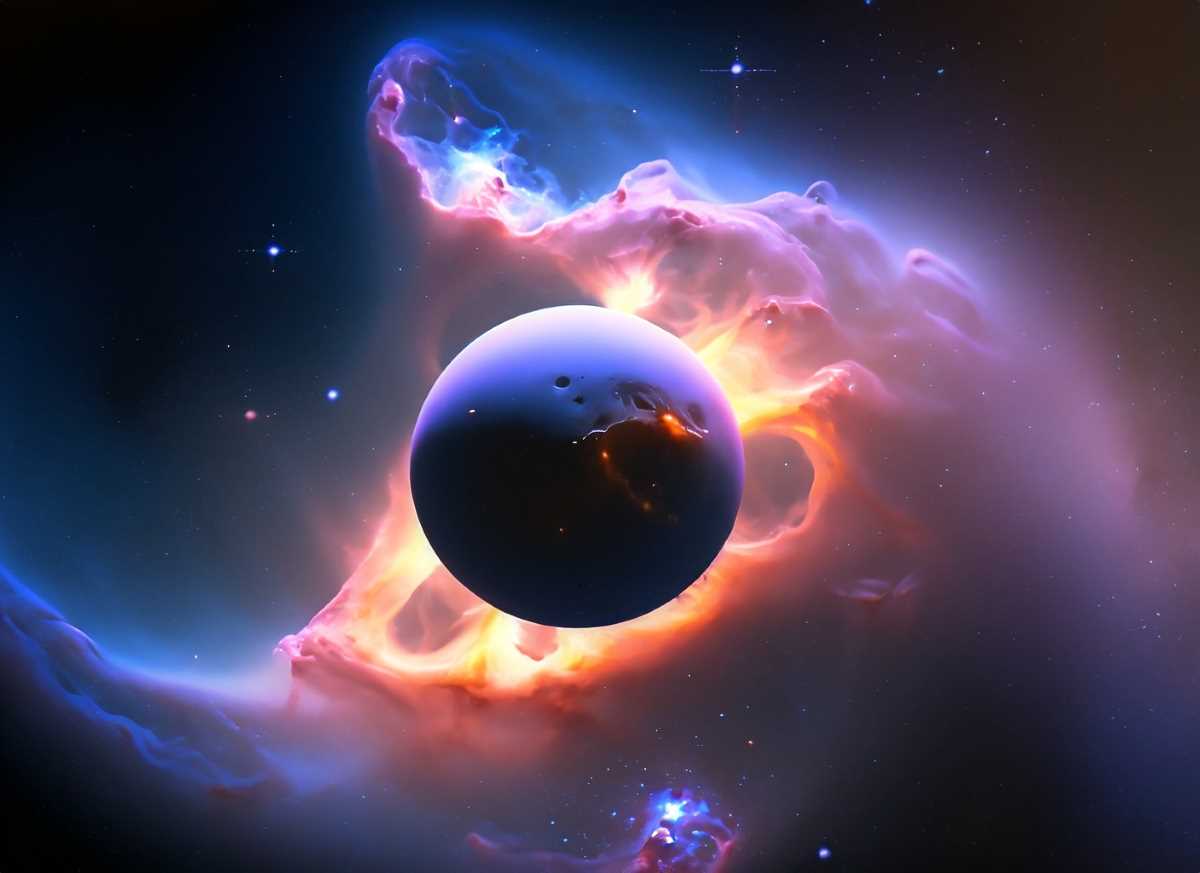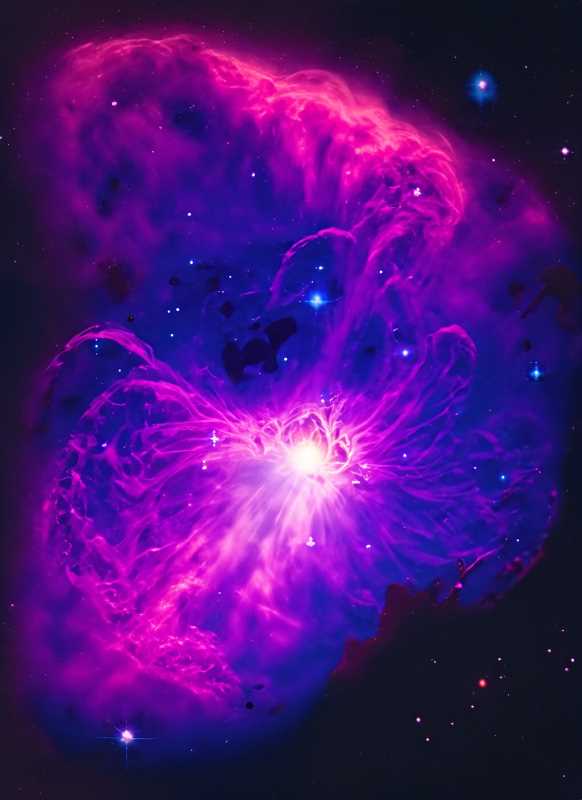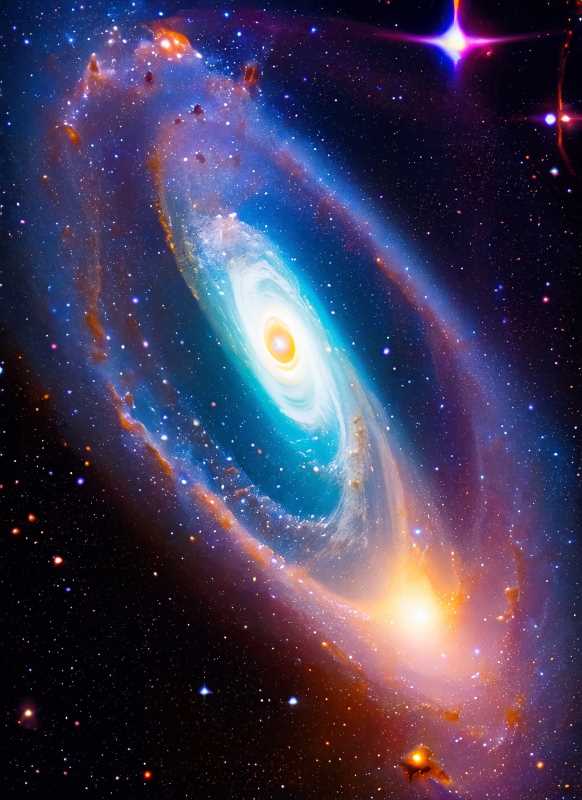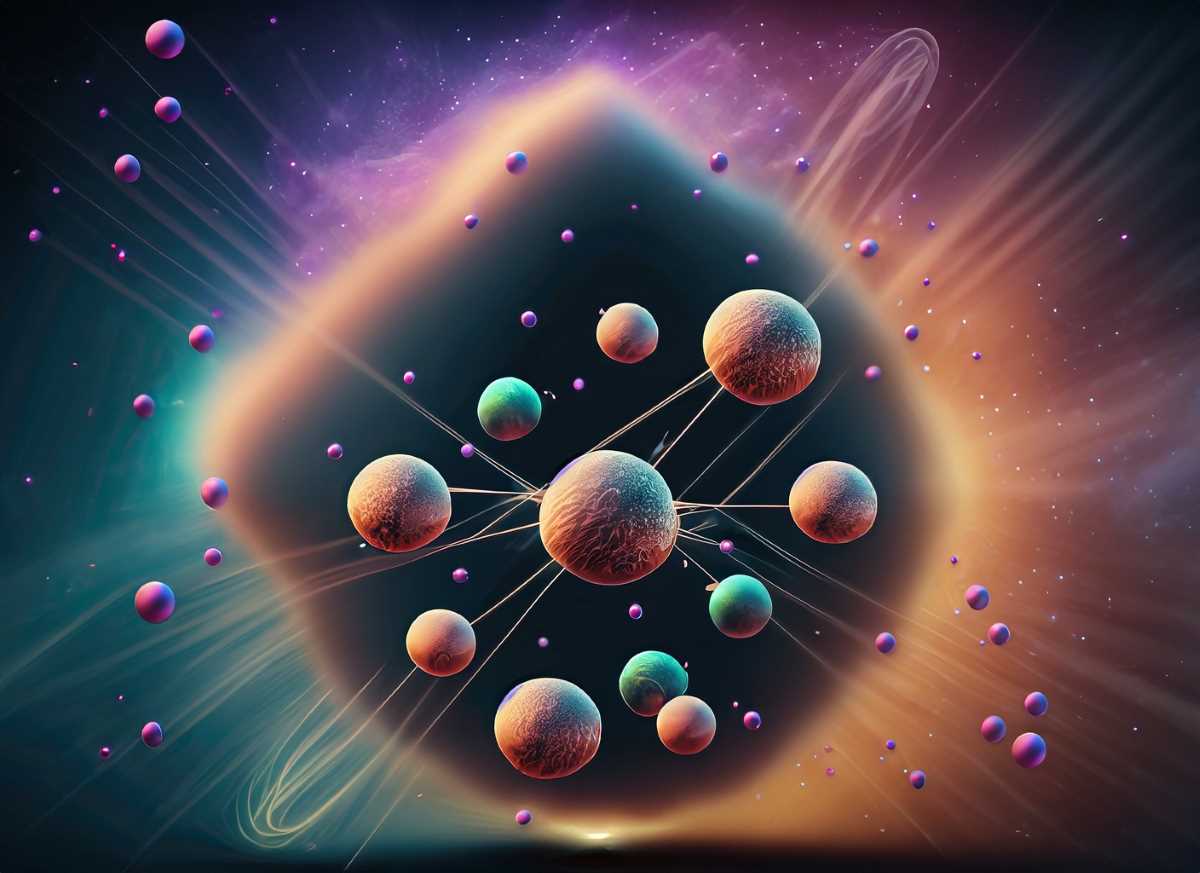Piecing Together the Cosmic Composition Comparisons
Exploration of the cosmos involves meticulous observations and advanced models to understand celestial entities’ chemical composition. Scientists decipher these compositions by studying unique emission lines emitted by elements in space, alongside sophisticated theoretical models.

Understanding the surrounding universe requires intricate observation, detailed measurements, and the application of advanced models. A key component of this exploration revolves around uncovering the chemical composition of various celestial entities, such as H II regions, planetary nebulae, and supernova remnants. But how do scientists reach such precision in their findings? The answer lies in the delicate nature between observational techniques and theoretical models.
Every element in space emits light, or radiation, at specific wavelengths when it gets excited. These emitted lights or “lines” are unique to the element, much like a fingerprint. By measuring the intensity of these emission lines and their ratios for different elements, scientists can decipher the chemical makeup of celestial bodies.
However, the challenge doesn't end there. To truly understand these emission lines, one must also know the atomic parameters. These parameters reveal the likelihood that a particular atom emits a photon corresponding to the measured emission line. In simpler terms, knowing the atomic parameters is akin to understanding the language of the atoms, allowing us to translate their emissions into comprehensible data.
The probability of an atom emitting a photon isn't a standalone factor. It intertwines with the temperature and electron density of the gas producing the emission. Think of this relationship as a complex ecosystem: change one factor, and it impacts the others.
To achieve accurate readings, scientists determine the temperature and density by making precise measurements of emission line ratios. Interestingly, they focus on the ratios of the same element, ensuring consistency and accuracy in their approach.
Once the hard-earned data from observations is in hand, the next step is comparison with theoretical models. These models, built on rigorous mathematics and astrophysical theories, provide a framework to understand and predict the behavior of celestial bodies. By comparing observational data with theoretical models, scientists can validate their findings, refining their models, and paving the way for future discoveries.

Stellar Evolution Inconsistencies and Solutions
Stellar evolution remains one of the most fascinating realms in astrophysics, elucidating the life cycle and transformation of stars. This scientific discipline employs intricate models to predict the chemical composition and modifications occurring within stars that possess masses ranging between one and eight solar masses throughout their evolution. The narratives proposed by these models offer insights into how nuclear reactions sculpt the core structures and chemical narratives of stars, particularly dictating the composition of outer layers expelled into the interstellar medium, forming planetary nebulae.
The predictions on chemical composition obtained from these models present opportunities for comparison with observations of planetary nebulae. A meticulous comparison reveals inconsistencies in observed ratios of carbon to hydrogen, helium to hydrogen, and nitrogen to oxygen. The observed discrepancies are higher than the theoretical delineations extended by stellar evolution, marking a crucial juncture in the ongoing discourse on stellar life cycles. This hints at the necessity to refine existing models by considering variable values for the mass loss rate by stellar winds and the convective mixing length ratio on the pressure scale.
The variability in these parameters could be contingent upon the age and the concentration of heavy elements within the stars. Notably, the prevalent models postulate a uniform approach, assuming these parameters to be constant, devoid of any temporal variation, and do not perform an in-depth exploration of their potential alterations linked to initial chemical compositions.
In 1971, Sidney van den Bergh and a colleague embarked on a comprehensive study of the supernova remnant termed Cassiopeia A. This examination validated that it is instrumental in enriching the interstellar medium with heavy elements. This aligned with the theory for n-type supernovae. The intricacies of stellar evolution are further complicated by the observations of old supernova remnants. These remnants, thousands of years in age, having traversed the interstellar medium, have mingled with uncontaminated gas, diluting the heavy elements and creating impediments in verifying model predictions. Cassiopeia A, with an estimated age of three hundred years, has its expelled gas undiluted by the interstellar medium, marking a significant point of study.

Observations from H II regions have demonstrated that the interstellar medium's enrichment due to planetary nebulae and supernovae contrasts with theoretical postulations. It is discerned that for every gram of heavy elements, three grams of helium are generated, contrary to the theoretical prediction of a one-to-one ratio, unveiling a discrepancy factor of three. There are proposed solutions to this divergence: either a reevaluation and enhancement of stellar evolution models are mandated. Or a considerable fraction of stars with masses exceeding eight solar masses are leading to the formation of black holes, which encapsulate heavy elements, thwarting their interaction with the interstellar medium.
Maeder and Mallik have hypothesized that stars boasting masses greater than twenty-five solar masses result in the generation of black holes that incarcerate heavy elements. However, models of stellar evolution that can quantitatively validate this proposition remain in the developmental stages. The discrepancies and the ongoing propositions accentuate the imperative to deepen our exploration and understanding of stellar evolution. It is vital to expand our theoretical frameworks, juxtapose them against empirical observations, and meticulously address the anomalies and inconsistencies to unravel the enigma that is the life cycle of stars.

Insights into the Evolution of Galaxies
The vast and enigmatic cosmos is continuously evolving, and at its heart are galaxies, colossal cosmic entities made up of billions of stars, gas, and dust. Among the many mysteries that they hold, the distribution and abundance of elements within them provide key clues to their formation and development.
In 1979, an intriguing discovery was made by a group of researchers, including Lequeux, Fierro, Serrano, Torres, and others. They found a distinctive correlation between the mass of galaxies and the fraction of heavy elements present in H II regions, the areas of space in galaxies where new stars form. But why is this significant?
H II regions are essentially nurseries for stars. Observing the abundance of heavy elements in these areas gives scientists insights into the ongoing processes of star formation and the chemical evolution of galaxies. If one can understand the chemistry within these regions, one can begin to unravel the history of a galaxy.
The relationship unearthed by the team has three potential explanations:
- Efficiency of Heavy Element Production: As the abundance of heavy elements present during star formation increases, the subsequent generation of stars might be more efficient at producing even more of these heavy elements.
- Intergalactic Material Capture: Larger galaxies might be less efficient in capturing material from the intergalactic space compared to the rate they form stars.
- Loss of Mass to Intergalactic Medium: As the galaxy grows in mass, the rate at which it loses mass to the space between galaxies compared to its rate of star formation could decrease.
While these theories present exciting avenues for exploration, they are still the subject of ongoing research as scientists try to ascertain which, if any, dominate the evolution of galaxies.

Another captivating revelation came from observations conducted with the International Ultraviolet Satellite and the Hubble Space Telescope. This research, involving scientists like Dufour, Torres, and others, showed that as the ratio of oxygen to hydrogen increases, so does the ratio of carbon to oxygen.
Two primary theories emerge from this discovery:
- Sequential Enrichment: Each new generation of stars might be releasing oxygen into the interstellar medium first, followed by carbon.
- Efficiency in Carbon Production: Stars that form with a higher initial ratio of oxygen to hydrogen could be more adept at producing carbon.
Both of these insights – the relationship between galaxy mass and elemental abundance, and the increasing carbon-to-oxygen ratio – provide intriguing pieces to the puzzle of galactic evolution. The dynamic nature of the universe ensures a constantly shifting landscape, and every new discovery brings us a step closer to comprehending the galaxies.

The Nexus of Cosmology and Particle Physics
The study of the universe and its contents, known as cosmology, brings forth intriguing connections between seemingly isolated domains, establishing unities between the vastness of galaxies and the diminutive nature of elementary particles. A groundbreaking revelation in this discipline was unearthed by Silvia Torres and her colleagues in 1974 and 1976, which interlinked the abundance of helium in galaxies to the presence of heavy elements, pushing the boundaries of our understanding of the universe.
By exploring galaxies differing in their heavy element content, Torres found that an increased concentration of heavy elements corresponds to a higher quantity of helium. Projecting these findings onto objects devoid of heavy elements implies that at the formation of galaxies, the composition consisted of 23% helium and 77% hydrogen, a proportion of helium coined as pregalactic or primordial helium. Astonishingly, the 23% helium value remained consistent across galaxies separated by hundreds of millions of light-years, substantiating the notion of a universal process responsible for the genesis of pregalactic helium. This extensive uniformity in helium content aligns seamlessly with the predictions of the big bang model, providing empirical support to this prevailing cosmological theory.
In 1977, Steigman, Schramm, and Guno explored the theoretical realms of helium synthesis during the universe's nascent stages, concluding that the existence of only three neutrino families is crucial, as additional families would augment helium production by approximately 1% per family. This cosmological prediction was empirically validated in 1990 through the scrutiny of the z particle's decay rate at Stanford and CERN accelerators, which solidified the existence of three light neutrino families, establishing a profound link between cosmology and particle physics.
Discerning the universe's fate and nature necessitates an understanding of its density in representative volumes. A critical density corresponds to a flat, Euclidean Universe, where its expansion would indefinitely decelerate due to gravitational fields generated by its mass, ultimately reaching a standstill in infinite time. Any excess in density would lead to a future contraction, characterizing a closed Universe. Conversely, a subcritical density would entail an ever-expanding, open Universe, with gravitational fields insufficient to halt the expansion.
Comparative analysis of pregalactic helium, deuterium, and lithium with theoretical predictions reveals a striking disparity between the baryonic mass and the Universe's critical mass, implying an eternally expanding Universe if composed solely of baryons.
Efforts to quantify universe density directly indicate that luminous matter constitutes merely 2 or 3% of the critical mass, with hypotheses suggesting a tenfold prevalence of dark matter over luminous matter. However, the composition and abundance of dark matter remain shrouded in mystery. Theoretical cosmologists espouse a Euclidean Universe based on inflationary theory. Verification of this would either imply a non-baryonic composition, potentially of neutrinos, axions, or other particles constituting 90 to 95% of the universe's mass, or necessitate a recalibration of the standard big bang model.
The forthcoming years promise advancements in observational precision and theoretical sophistication, poised to furnish a more holistic and nuanced comprehension of the universe, inevitably propelling us into a cascade of newfound questions and revelations. The continuous exploration of cosmology and its intricate ties with elementary particle physics will likely illuminate the enigmatic components and dynamic behaviors of our ever-evolving universe, unraveling the mysteries of existence.
In-Text Citation: ‘Evolución de La Composición Química Del Universo’. Revista de La Universidad de México, https://www.revistadelauniversidad.mx/articles/84f43983-4ac5-4e19-90ea-ecfafd73f26e/evolucion-de-la-composicion-quimica-del-universo. Accessed 14 Sept. 2023.




